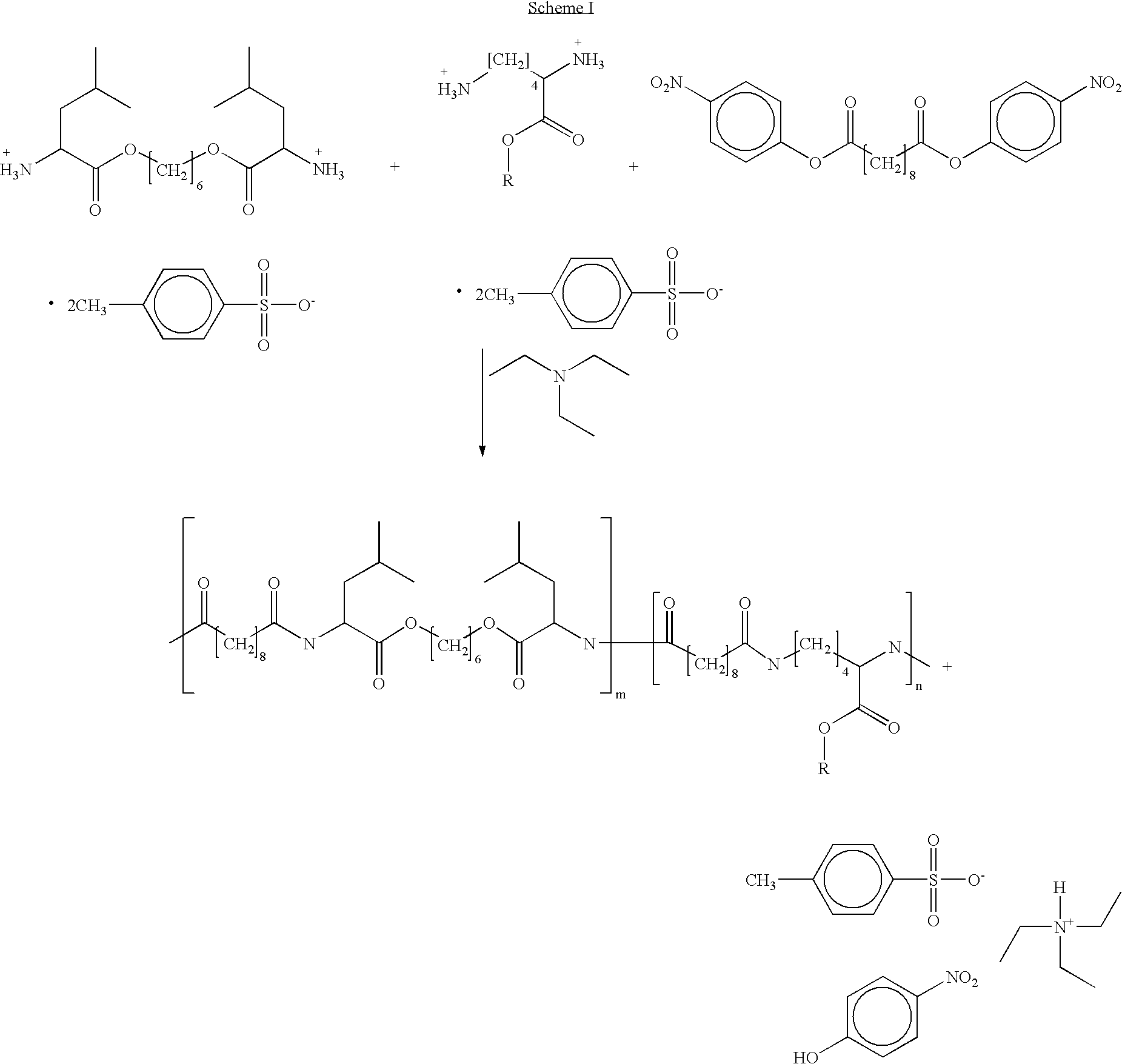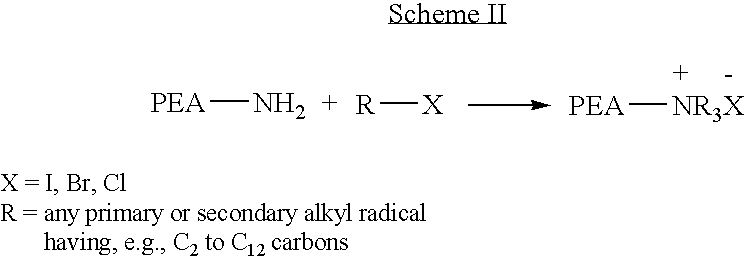End-capped poly(ester amide) copolymers
a polymer and end-cap polymer technology, applied in the direction of coatings, etc., can solve the problems of crosslinked pea polymer not being processable, crosslinked pea polymer not being able to be coated onto a stent, and high probability,
- Summary
- Abstract
- Description
- Claims
- Application Information
AI Technical Summary
Benefits of technology
Problems solved by technology
Method used
Image
Examples
example 1
Preparation of co-poly-{[N,N′-sebacoyl-bis-(L-leucine)-1,6-hexylene diester]-[N,N′-sebacoyl-L-lysine benzyl ester]}
[0044] Dry triethylamine (61.6 ml, 0.44 mole) is added to a mixture of di-p-toluenesulfonic acid salt of bis-(L-leucine)-1,6-hexylene diester (120.4 g, 0.18 mole), di-p-toluenesulfonic acid salt of L-lysine benzyl ester (11.61 g, 0.02 mole), and di-p-nitrophenyl sebacinate (88.88 g, 0.2 mole) in dry DMF (110 ml). The mixture is stirred and heated at 80° C. for 12 hours.
example 2
[0045] The active amino endgroups on the PEA prepared in Example 1 can be endcapped according to Scheme III as follows. While stirring, the DMF / PEA solution of Example 1 is cooled to 0° C. Triethyl amine (0.0057 mole) is added and acetyl chloride (0.448 g, 0.0057 mole) is added dropwise to the mixture. Stirring is continued for 12 hours while the solution is allowed to equilibrate to room temperature. The solution is diluted with ethanol (300 ml), and poured into one liter of deionized water. The precipitated polymer is collected, extracted with two, one liter portions of phosphate buffer (0.1M, pH 7), a final, one liter portion of deionized water, isolated by suction filtration, and vacuum dried at 40° C.
example 3
[0046] The active amino endgroups on the PEA prepared in Example 1 can be endcapped according to Scheme IX as follows. Ethyl acrylate (0.571 g, 0.0057 mole) is added to the DMF / PEA solution of Example 1. With stirring, the solution is heated to 100° C. Prior to the mixture reaching the reaction temperature, phosphoric acid (0.011 g, 0.000114 mole) is added as an acid catalyst and the solution is stirred for 60 minutes at 100° C. The solution is diluted with ethanol (300 ml), and poured into one liter of deionized water. The precipitated polymer is collected, extracted with two, one liter portions of phosphate buffer (0.1M, pH 7), a final, one liter portion of deionized water, isolated by suction filtration, and vacuum dried at 40° C.
PUM
| Property | Measurement | Unit |
|---|---|---|
| pH | aaaaa | aaaaa |
| temperature | aaaaa | aaaaa |
| atomization pressure | aaaaa | aaaaa |
Abstract
Description
Claims
Application Information
 Login to View More
Login to View More - R&D
- Intellectual Property
- Life Sciences
- Materials
- Tech Scout
- Unparalleled Data Quality
- Higher Quality Content
- 60% Fewer Hallucinations
Browse by: Latest US Patents, China's latest patents, Technical Efficacy Thesaurus, Application Domain, Technology Topic, Popular Technical Reports.
© 2025 PatSnap. All rights reserved.Legal|Privacy policy|Modern Slavery Act Transparency Statement|Sitemap|About US| Contact US: help@patsnap.com



